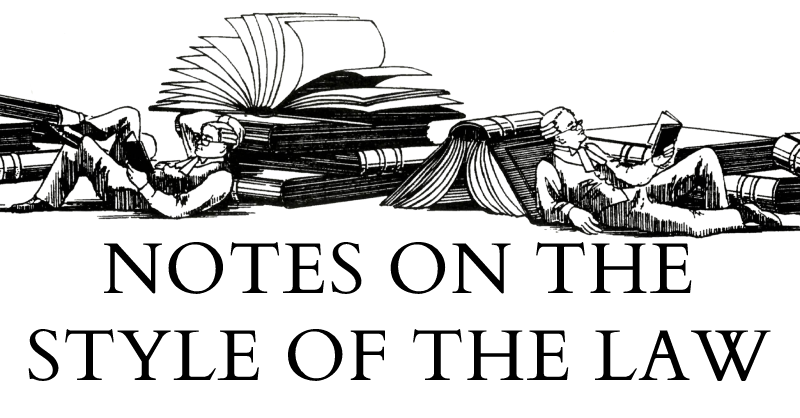
 legal citation
legal citation  legislation
legislation  citing legislation
citing legislation  signals
signals  tags
tags  parentheticals
parentheticals  clarity
clarity  efficiency
efficiency  Acts of Parliament
Acts of Parliament 

Legal citation has two goals: efficiency and clarity. Citations should, in the least space possible, convey all the essential information the reader requires to locate the authority in question. This trite statement of principle is why good legal writers should avoid using ‘as amended’. That little tag (or signal) added in parentheses to statutory citations is designed to inform the reader that the law as cited is not the one that was originally passed and put on the parliamentary roll, but rather the current consolidated version of the statute reflecting subsequent changes by Parliament or delegated legislation. It is also conceptually confusing and inefficient.
In the majority of cases, references to a statute are references to the current version as it stands on the day the writer makes the reference. The current version includes both legislation with amendments (easily and freely accessible in consolidated form from the Legislation website or equally from paid) databases) and legislation which was never amended. Both are equally contained in the category of ‘current’ legislation. It is not necessary to clarify that one intends to reference the current version of the law, since the reader will naturally assume that is precisely what the writer intends to mention. From a standpoint of efficiency, the majority, normal, expected case should not require a special signal; rather, it is the minority case that should be highlighted.
Yet, in the minority of cases (such as in where criminal liability arose under a previous version of a statute or where legislative history is being discussed) where the past version of legislation must be reference, ‘as amended’ also fails. That is because what is relevant is not whether the legislation was amended or not, but rather which amendments (if any) were current as of the day being referenced. If an Act from 1990 was amended in 2000 to add an offence and then amended again in 2010 to expand the offence, both the 1970 and 2000 versions are ‘as amended’, but only one is current to a crime committed in 1980. Therefore, the relevant signal for amendment should be ‘The Example Act 1990 (as of 2000)’ rather than simply ‘as amended’. In the event of legislation that has only two versions: the original and the amended current version, the following tag works better: ‘The Example Act 1990 (as enacted)’. This adds clarity and avoids any latent ambiguity.
This simple amendment, by reversing how we cite amendments, works wonderfully to add clarity and efficiency to our citations. The time has come to adopt it.

© , Elijah Granet, but licensed to all under the terms of Creative Commons licence CC-BY-SA 4.0
Published by

GRANET PRESS
LIMITED


Comments
Post a Comment
Contributions are always welcome!